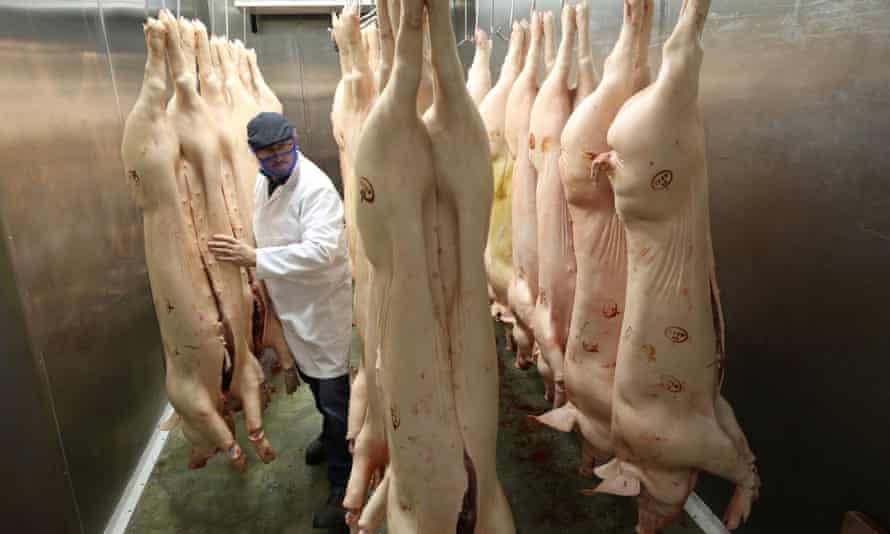‘Fallen stock’: what happens now to the UK’s unwanted pigs? | Food & drink industry
How are unwanted pigs killed?
Sick or injured animals on farms which are not able to be transported to a slaughterhouse are usually killed by a knackerman, the traditional name for the role.
There are very strict guidelines in place which control how animals are allowed to be dispatched on farm. The instructions, laid down by government, are known as standard operating procedures, designed to ensure that animals are spared any avoidable pain or distress, including when they are being stunned or killed.
For culling on farm, a captive bolt gun is usedto kill the animal instantly.
Pigs have a reputation for being heavy and boisterous and very difficult to restrain. This is part of the reason why farmers have been extremely reluctant to begin culling pigs on farms.
What happens to the carcasses?
A small number of pig carcasses could be burned in an incinerator, if the farm had access to one. However, people involved in dealing with dead animals – known as “fallen stock” – do not consider this likely, as incinerators require a lot of fuel to run, and could only deal with a few carcasses at a time.
The majority of pig carcasses are expected to be sent to Britain’s rendering plants. There are six category 1 plants – the kind which would deal with pig carcasses – in Great Britain.
The practice of rendering animal by-products dates back to ancient times, when animal fat would be turned into tallow, from which soap and candles were made.
Nowadays, the rendering process involves reducing the size of the carcasses, before they are cooked and the fat and protein are separated, allowing them to be turned into a range of products

What will the culled pig meat be used for?
By-products from animals which are considered fit for human consumption find their way into items such as pet food, animal feed, fish feed and chemicals.
However, the carcasses of any pigs killed on farm would not be inspected after slaughter, meaning they could not be assessed as being fit for human consumption. The carcasses from the current culling are therefore likely to be used only for products such as biodiesel.
Is it legal to burn and bury the carcasses instead?
It is against the law for dead animals to be buried or burned on farm, or for their carcasses to be left out to be eaten by certain types of birds. Burying or burning dead fallen stock is banned, because of the risk of disease being spread by contamination in the soil, in groundwater or through air pollution.
Dead animals are required to be collected by an approved transporter and taken for disposal at a certain number of locations, including a knacker’s yard, an incinerator or a renderer.
Source: theguardian.com

